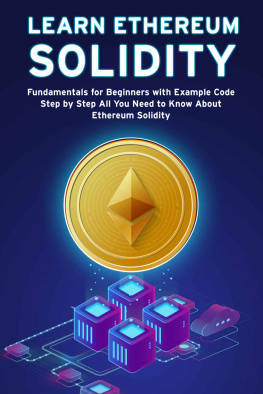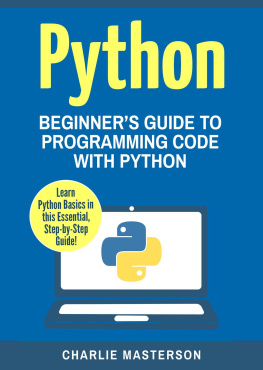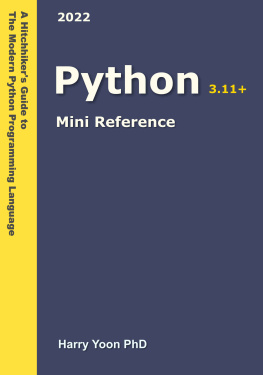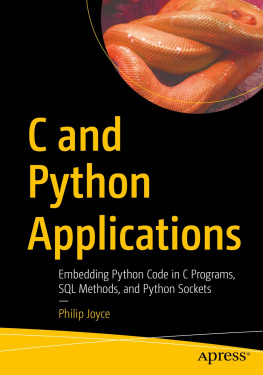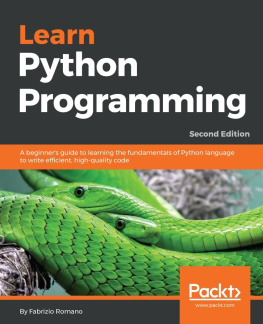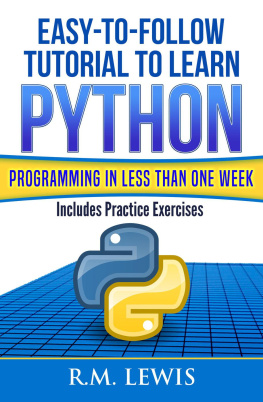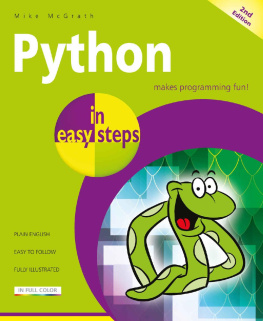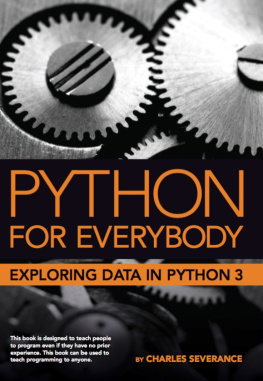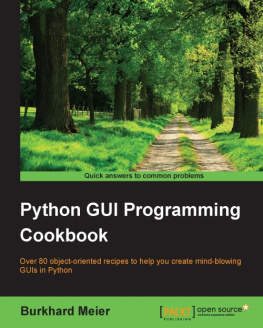WHAT IS PYTHON_ YOU SHOULD LEARN PYTHON NOW!
What is Python? Python is a general-purpose programming language, which is easy to learn and dynamically initialised. It has an easy and elegant syntax, with high-level and dynamic semantics, which makes it an ideal language for beginners, scripting and rapid application development. Python was first released in 1991 and created by Guido van Rossum, a Dutch programmer best known as the author of the Python programming language, who wanted to designed a language very simple to write and easy to read. Thus, Python is much easier to learn than any other programming languages. And it helps you create beautiful applications, with less effort. But you're wondering: What features and benefits does Python offer? There are many features provided, so are the benefits of learning Python, especially as your first language... Let's start with the benefits of learning Python. Easy: Python is the best languages to get started with and the language preferred by beginners and pros alike. Its easy syntax and high-level features makes it one of the best languages, for anybody who wants to start programming. Free: Python is an open source language, which means that it is free for everyone to use. It can be freely modified and redistributed for any purpose, commercial or not. Application: Python can be used to develop almost anything, desktop mobile and web applications. Plus it is very useful in many areas: data analysis, artificial intelligence, machine learning and so forth. Library support: Python has a massive support base, thanks to the fact that it is open source and community developed. Millions of like-minded developers work with the language on a daily basis. And they continue to improve core functionality, which makes Python even better and more efficient. Thus, it is a great way to network with other developers, share and develop your skills. You can now understand why people in the world love Python so much. But, What are its features? Simplicity: Python is a language that is remarkably easy to learn, which means that it is much easier to get your programs up and running. Since it requires a simple elegant and beginner friendly syntax, that focuses on readability, the programs you write are much easier to read - even if you are not a skilled programmer. This is mainly because it is closer to the human language, or how we write words, instead of a language that computers used to read. Developers can read and translate Python code much easier than any other languages. In turn, this reduces the cost of program maintenance and development, because it allows teams to work collaboratively and without significant language or experience barriers. Interpreted: Python supports multiple programming paradigms, including procedural, object-oriented and functional programming. Most importantly: Python is an interpreted language, which means that the written code is actually not translated into a computer readable format... Python codes are executed line by line, which makes debugging errors much easier and efficient. But this comes at a cost, as it is much slower than other compiled programming languages. Object orientation: object-oriented programming is an approach used for modeling concrete and real world entities into software objects, which have some data associated with them and can perform certain functions. For instance, an object could represent a person with a name, an age, an address, etc. And with behaviors like: walking, talking or running. Its object oriented approach aims to help programmers write clear and logical code, for small and large-scale projects. Portability: there is no exclusivity, as Python and all the necessary tools are available on all major platforms. It is compatible with a long list of computers and operating systems, like Windows, Linux, Mac OS and more. Furthermore, it uses a similar interface on each one of those platforms, which means you can jump between them easily - and if necessary. Embeddable and extensible: Python can be embedded into an application, which will provide a programmable interface for the users of this app. This is a great feature, if you are putting together an app that will require working with Python in a terminal. Additionally, Python supports the use of modules and packages, which means that programs can be designed in a modular style, and code can be reused across a variety of projects. Even better, it can be shared and scaled for use in other projects, once you have developed the module or package that you need. It is very easy to import or export libraries. Python comes with the Standard Python Library, offering integrated support for a variety of common programming tasks, like syncing with web servers, searching through text and modifying files... For a majority of other languages, you have to create this content from scratch. Python also has an amazing community that has built a number of additional useful tools. And you could use them in your own programs. Do you need to work with PDF documents? There is a comprehensive tool for that! Want to collect data from web pages? No need to start from scratch: Python powers Django, a complete and open source web application framework, which can be used to simplify and speed the development process. Open source: Python has a massive support base, thanks to the fact that it is open source and community developed. Millions of like-minded developers work with the language on a daily basis, and they continue to improve core functionality. The latest version of Python continues to receive enhancements and updates. Therefore, it is a great way to network with other developers, share and develop your skills. One of the most promising benefits of python is that the Python interpreter and the extensive standard library are freely available, in both source and binary forms, and for all the major platforms. It can be downloaded from the Python web site and may be freely modified or redistributed for any purpose, commercial or not. Since Python is available under an open-source license there are no licensing fees either, despite the fact that it is copyrighted. The same site also contains distributions and pointers to many free third-party Python modules, as well as programs and tools. But also additional documentation and so on. If this description of Python over your head don't worry, you will understand it soon enough. What you really need to take away from these sections is that Python is a programming language used to develop softwares and web apps, including mobile. It is relatively easy to learn, since the necessary tools and documentations are available to all and free of charge. That makes python accessible to almost anyone... If you have the time to learn, you can create some amazing things. Therefore it can be used as a stepping stone into other programming languages and frameworks. Anyone can begin working with the language, all it takes is a bit of patience and a lot of practice. If you are an absolute beginner and this is your first time working with any type of coding language, Python is definitely something you want. But, Why is Python getting so popular? Because of all its features and benefits, you might have heard that Python is popular. On one hand, it may seem that it doesn't really matter how popular language is, if you can build the app you want to build with it. But for better or worse, in software's development: popularity is a strong indicator of the high quality of libraries you will have available, as well as the number of job openings. So, is Python actually that popular? YES, and there are plenty of stats to back this one. Let's look at some analytics available and pre sented by stackoverflow.com. They run as its called: stack overflow trends. Here you can look at the trends for various technologies by tag. When you compare Python to the other likely candidates that you could pick to learn programming, you will see one is unlike the others. Notice the incredible growth of Python, compared to the flat line or even the downward trend of the other usual candidates. If you are betting your future on the success of a given technology, which one would you choose from this list? You got it, Python has a lot to offer. And you will soon be able to write your own scripts. What is Python used for? Actually, pretty much anything you want! Most automation, data mining and big data platforms rely on Python. Python can also be used to process text, display numbers or images, even solve scientific equations and save data. In short, it is used behind the scenes to process a lot of elements you might need or encounter on your devices. This is because it is the ideal language to work with for general-purpose tasks. For instance, it is used for GUI applications, games development, scraping data from websites web and software development, system administration utilities, scientific data analysis, machine learning, and many more... The Python programming language, also referred to as a scripting language, has considerably changed these last few years. Because Python is now used to write large commercial style applications, instead of just banal ones. Thus, this reliance on Python has grown even more, so as the internet gained popularity. Not only is Python a friendly and fun language to learn, but it also powers the technology behind multiple world-class companies. Actually, a large majority of web applications and platforms now rely on Python, including Google's search engine, YouTube platform and the web oriented transaction system of the New York Stock Exchange (NYSE). You know that the language must be pretty serious, when it comes to powering a stock exchange system. In fact there are also many other big companies, among Pinterest, Instagram, Netflix, Spotify, Disney, Yahoo, Nokia, IBM and many others, to name just a few. You are probably wondering why any of this matters? That's because once you learn Python, you will never have a shortage of ways to utilize your skill. Not to mention, since a lot of big companies rely on the language, you can make good money as a Python developer. Career opportunities: In this dynamic world where everything changes at a rapid rate, the popularity of Python never seems to cease. Today, Python certification is one of the most sought after skills, in the entire programming domain. Have you ever wondered if it is really worth it? Python as a programming language is easy and simple to learn. Python cuts development time in half with its simple to read syntax and has easy compilation feature. It also has plenty of libraries that support data analysis, manipulation and visualisation. Therefore, it has evolved as the most preferred language and considered to be the next big thing and a must, for professionals. By the end of 2019, Python was delivering some impressive numbers. A recent indeed.com inquiry also revealed at least 55,000 Python jobs in the United States, with exponential salary figures. You can find many job offers on the market. Most of the companies are seeking for the following profiles, which may require Python skills. Software engineer, Python developer, research analyst, data analyst, data scientist, software developer... Are you now ready to learn Python? But you don't know how to get started, or even what to learn? Whether you are new to programming or a professional software developer looking to dive into a new language, this project will teach you all of the Python basics that you need to get started on your own projects. Python syntax, variables, data types, operators, conditions, loops, methods and functions, file handling OOP, and so many more. No matter what your ultimate goals may be or if you work with a computer at all, you will soon be finding endless ways to improve your life by automating tasks and solving problems with Python programs that you will create.


